


According to Anatoli Unitsky, a sustainable future for humanity can be achieved through eco-oriented technological platforms, one of which focuses on the development of organic farming.
It’s well-known that the modern reliance on heavy agricultural machinery, chemical fertilizers, and pesticides has serious negative consequences for the soil. These practices destroy the soil structure, deplete organic matter, and lead to the accumulation of toxic substances, ultimately harming valuable agronomic microorganisms. While crop yields may increase, one must question the actual utility of products grown in such compromised soil.
Since the mid-1970s, Anatoli Unitsky has been researching the development of a new organic fertilizer, demonstrating that crops can be cultivated in a more sustainable manner. We explored the origins of the uTerra product and its unique qualities.
— Mr. Anatoli Eduardovich, it’s known that the results of your space innovations include not only string transport but also uTerra organic fertilizer. At first glance, these two developments may seem unrelated, but there must be a connection between them. Could you elaborate on that?
— Yes, that’s correct. The idea for developing biofertilizers emerged while I was working on the uSpace program. This initiative envisions large-scale space exploration, including the transfer of industrial activities that currently harm the environment and human health. To facilitate this, we need an optimal geocosmic transportation system, which is embodied in the GPV (General Planetary Vehicle). I first presented this project to the world in 1982.
The GPV is a reusable geocosmic transportation and infrastructure complex designed for non-rocket exploration of near space. It will take the form of an electrically powered, self-sustaining aircraft that will orbit Earth along the equator. Specialists supporting the space industry will reside in EcoCosmoHouses, where the Earth’s natural and climatic conditions will be replicated. These EcoCosmoHouses will feature gardens planted in fertile soil and agricultural facilities dedicated to producing ecologically clean food. This led me to consider how we could recreate highly fertile soil in the airless expanse of outer space. Thus, the concept of an organic biofertilizer began to take shape.

Furthermore, a critical component of the renewed technosphere on Earth will be an equatorial linear city. People there will need at least the following industries: sustainable food production, renewable energy, eco-friendly housing (EcoHouse), functional transportation, and robust information and energy infrastructure.
None of the branches of Earth’s technosphere should negatively impact the surrounding terrestrial biosphere. It is essential that these systems are characterized by high efficiency, low energy and resource consumption, and exemplary quality standards. Only eco-oriented technology platforms can achieve these conditions, one of which is uGreen. This approach to farming leverages natural soil ecosystems, complete with their own microflora, microfauna, and biogeocenosis. It emphasizes a total rejection of synthetic chemicals — such as fertilizers and pesticides — as well as genetic modification technologies and other elements of traditional intensive farming.
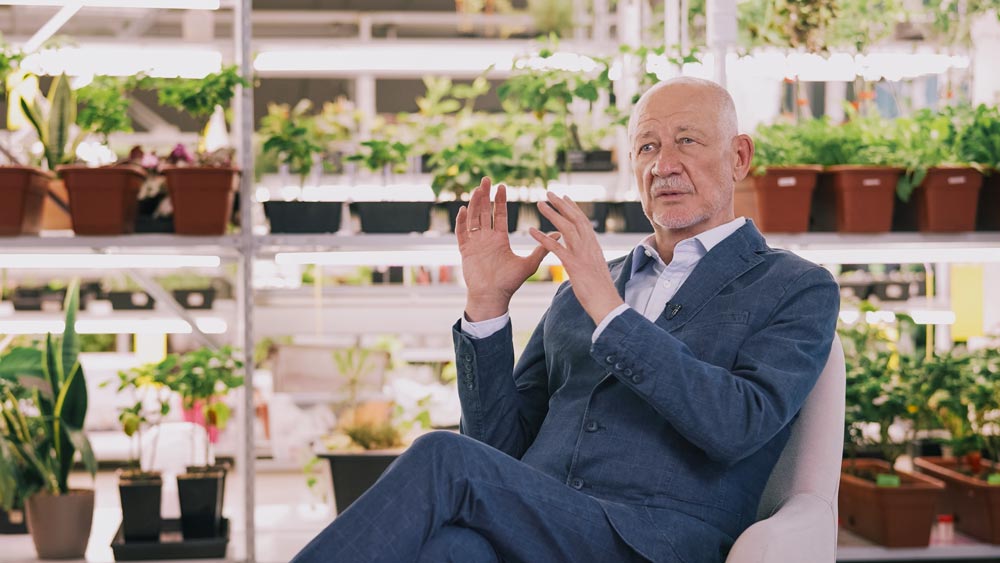
I have developed a technology that enables agricultural practices in space, allowing us to continually convert biological waste into biological humus. This humus can then be applied to the soil each season as a sustainable alternative to chemical fertilizers.
— Can you tell us how you developed an organic fertilizer?
— I have been farming for 34 years. My decision to delve deeper into agronomy stemmed from a desire to validate my experiments in practice rather than just on paper, demonstrating that my agro-biotechnologies truly work.
Near the string transport testing center in Maryina Gorka, I used my personal funds, along with loans and bank credits, to establish the Unitsky Farm Enterprise.
There, with the help of dedicated partners, I created the World Bank of Living Soils, which included samples from 150 regions across all continents except Antarctica. It was essential that these soil samples remained untreated to preserve the agronomically valuable microorganisms.
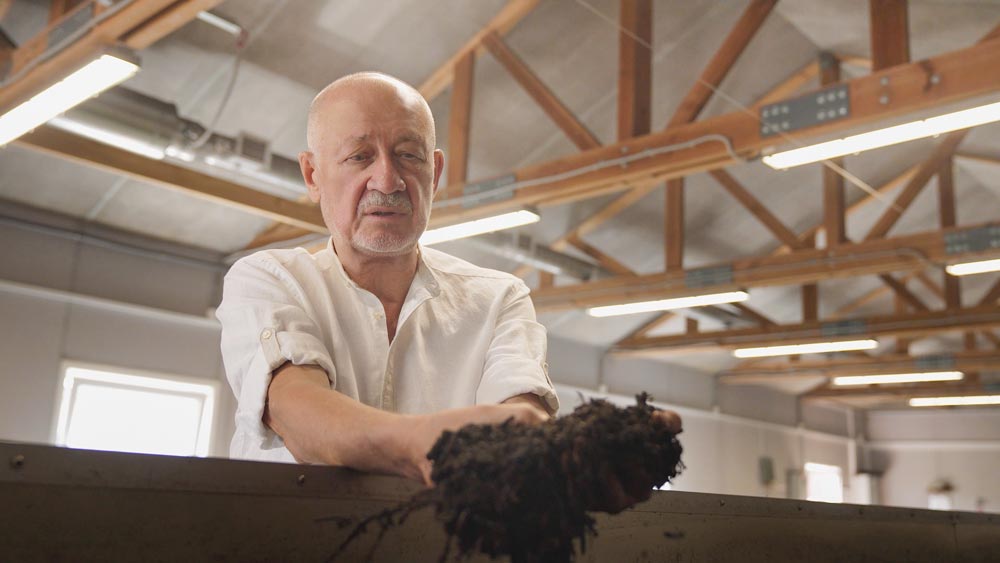
Next, we introduced a specially bred species of earthworm, Lumbricus uTerris, into the soil. It is well-known that earthworms, particularly at a density of at least one million per hectare, enhance the population of beneficial microorganisms in their digestive systems while breaking down harmful elements.
What makes Lumbricus uTerris unique is its ability to process lignite and oil shale, both of which contain high levels of humic acids. These acids enrich the soil with beneficial nutrients and accelerate plant growth.
However, to initiate this process and achieve the desired effects, we must activate the lignite and oil shale by combining them in laboratory conditions with organic and mineral substances, such as alkali and ammonia water. The result of this process is pure humic acids or their salts — sodium, potassium, and ammonium humates. This is how I created the organic fertilizer I call uTerra, often referred to as the “elixir of fertility”.
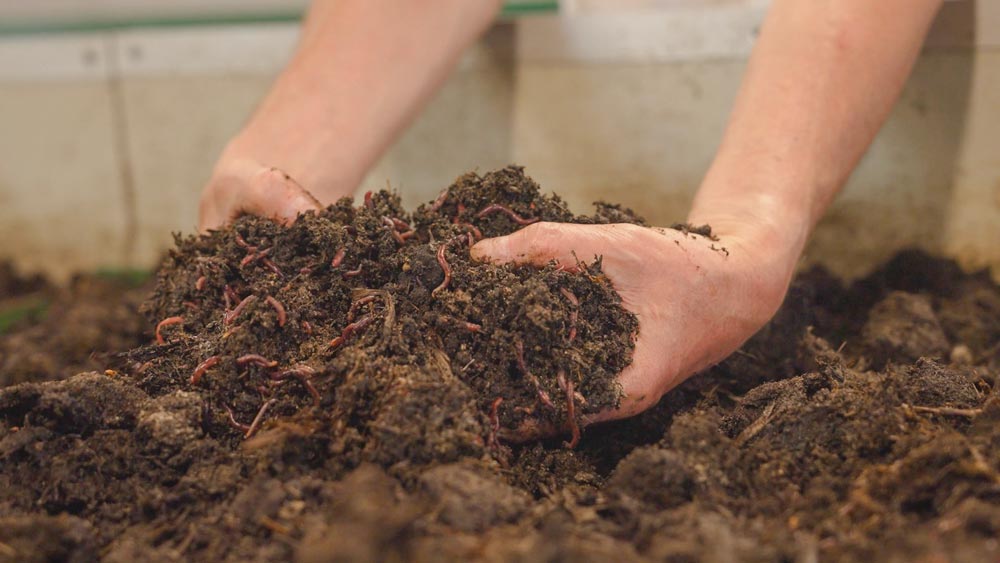
The chemical structure of humic acids contains quinoid groups that enhance metabolic bioprocesses, leading to faster root system development. This process produces special enzymes that improve plant resistance to environmental stressors like drought and frost while accelerating the synthesis of pigments, sugars, vitamins, and essential amino acids. As a result, the plants’ immune systems are strengthened.
Thanks to the earthworm Lumbricus uTerris, we can replicate the relic soil that existed on our planet millions of years ago. This is one of the distinctive features of our development.
— What makes uTerra biofertilizer unique?
— First and foremost, I utilize untreated soil to produce this organic fertilizer. This soil contains approximately 80 chemical elements from the periodic table, as well as a diverse array of aerobic and anaerobic microorganisms, which serve as the immune system for the Earth’s biosphere.
The uTerra crumbly biohumus and the uTerra fertility elixir provide everything necessary for the complete nutrition of soil fauna and microbial associations. Thousands of species of agronomically valuable microorganisms – both aerobic and anaerobic — actively enhance plant growth through various mechanisms. These include the fixation of atmospheric nitrogen, the synthesis of phytohormones such as auxin, gibberellin, and kinetin, and the prevention of premature aging in plant organs, including leaves, flowers, and fruits.
Additionally, these microbial associations play a crucial role in controlling plant diseases caused by harmful bacteria and fungi. The growth of pathogens is suppressed through the release of antifungal compounds and competitive displacement of harmful species, aided by the natural antibiotics found in the uTerra soil elixir.
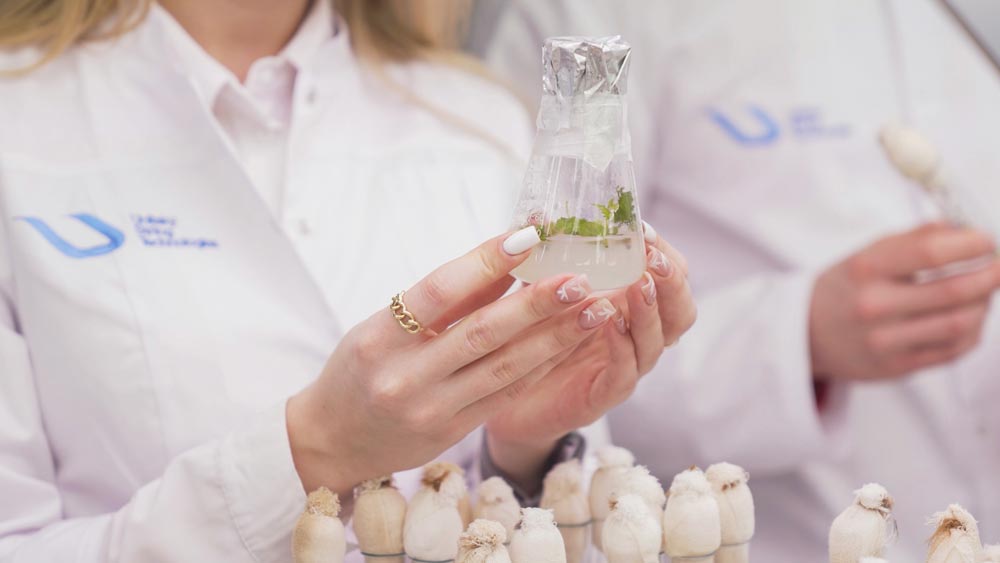
— You assert that your uTerra fertilizer can rejuvenate “dead” soil. How does this work?
— The process is straightforward. From the 300 trillion tons of organic matter found in brown coals and oil shales — stored by living organisms over billions of years of biospheric evolution — we can derive approximately 450 trillion tons of living humus with a moisture content of 50-60%. If we incorporate up to 10% of this humus (the average humus content in black earth) into the top layer of soil, which is typically 30-40 centimeters thick, we can transform 15 billion square kilometers of land into fertile black earth farmland. This potential exceeds the Earth’s total land area by about 100 times and the globe’s surface by 29 times.
This method offers a way to convert the planet’s entire land area from a desert into a thriving garden, powered by the Earth’s relic solar bioenergetics, which we have also developed.
Regarding the interaction with heavy metals such as lead, mercury, and chromium — substances known to cause serious health issues in humans and animals — humates form insoluble compounds with these metals, preventing them from entering plant cells. It is known that in regions where soils are rich in humic acids, the ecological balance is preserved despite the intensive anthropogenic load.
— The land at the former tank range, where your farm is located, has faced significant anthropogenic impact. Have you tested your fertilizer there?
— Yes, the uTerra biohumus is currently being used on the fields of the Unitsky Farm Enterprise, named after its owner, the farmer Unitsky. We are harvesting crops that have become the envy of surrounding agricultural enterprises, and we’ve demonstrated in practice the effectiveness of our fertility elixir uTerra.
This biofertilizer has already been successfully tested by Belarusian farmers and is in high demand among dacha growers. Everyone reports increased yields: plants are becoming more resilient to external stresses, product quality is improving, and the soil retains its natural structure and fertility.
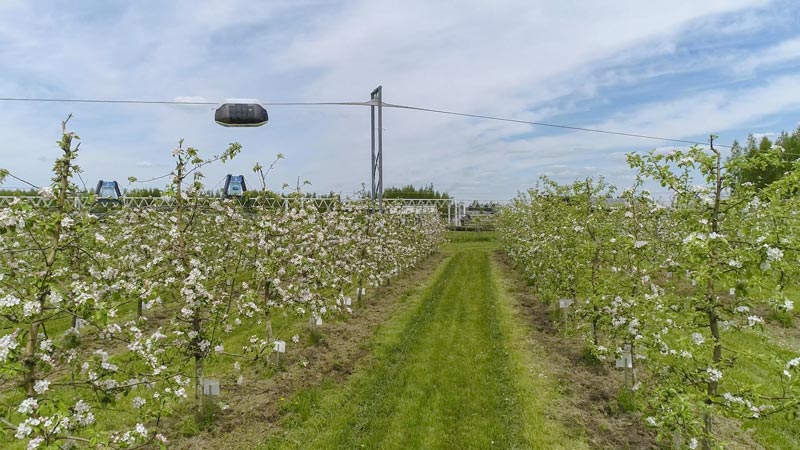
— Mr. Anatoli Eduardovich, can you explain to those who may not fully grasp the issue, what are the risks associated with consuming products grown using chemical fertilizers?
— Many diseases that we face today are linked to the lack of proper “building materials”. Our bodies are made up of tens of trillions of cells, which typically live for about six months before dying and being eliminated. New cells must take their place, otherwise, we risk serious health consequences. To build these new cells, we need a daily intake of beneficial substances derived from the 80 chemical elements in the periodic table, combined in diverse organic compounds found in our food.
In every kilogram of healthy living soil, there are around a trillion microorganisms, which are increasingly being destroyed by chemical fertilizers. More than 30 years ago, I took on the mission to address this issue. I started farming and developed technology to produce humus from the vast quantities of brown coal and oil shale accumulated on our planet in the number of hundreds of trillions of tons.
The food we consume today is often grown with inorganic fertilizers that provide only three elements — nitrogen, potassium, and phosphorus – in simple chemical forms rather than organic humates. While we might not yet feel the effects, we could soon face unpleasant changes, including at the genetic level.
Humus in the soil is not only a vital biospheric resource but also the primary organic food source for flora, which constitutes about 98% of the Earth’s biomass. It contains all the essential elements for life, structured as complex organic matter. More importantly, each kilogram of fertile humus hosts about a trillion microorganisms from tens of thousands of species, all working together in a complex symbiosis. Without them, human life would be impossible.
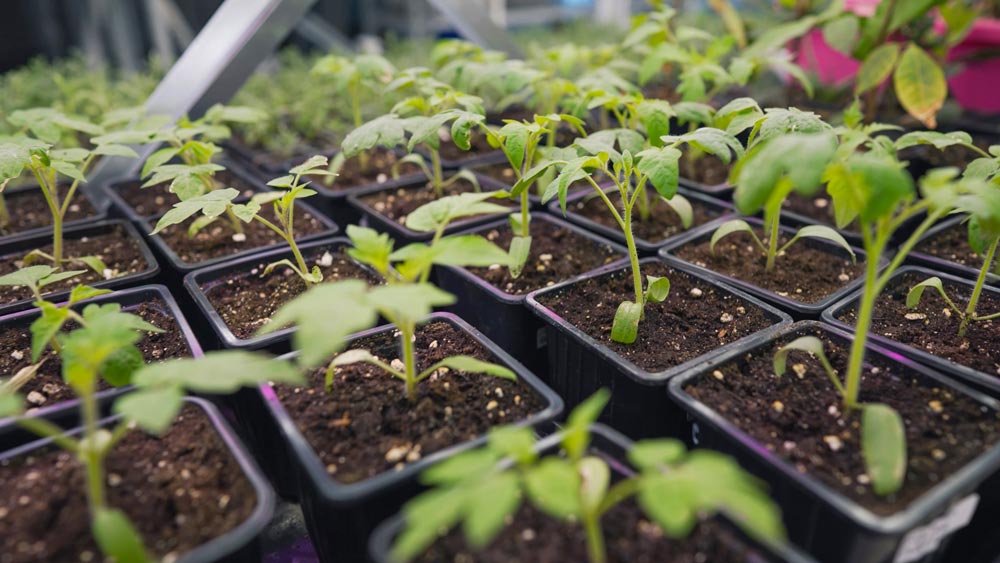
— Where is uTerra currently produced, and what are your plans for promoting this product?
— Production of the uTerra fertility elixir and crumbly biohumus began in Belarus in 2023. We have now reached industrial-scale production, exceeding a thousand tons annually.
During the development phase of the methodology for the industrial production of uTerra, specialists from the engineering company Unitsky String Technologies Inc. were involved at my request and expense, based on contractual agreements. The company’s role was not to create uTerra technology but to scale up the application of existing technology. It’s important to note that UST Inc. is not an investor in the uTerra project, they acted as a contractor for specific tasks, while I, as the investor, covered their labor costs.
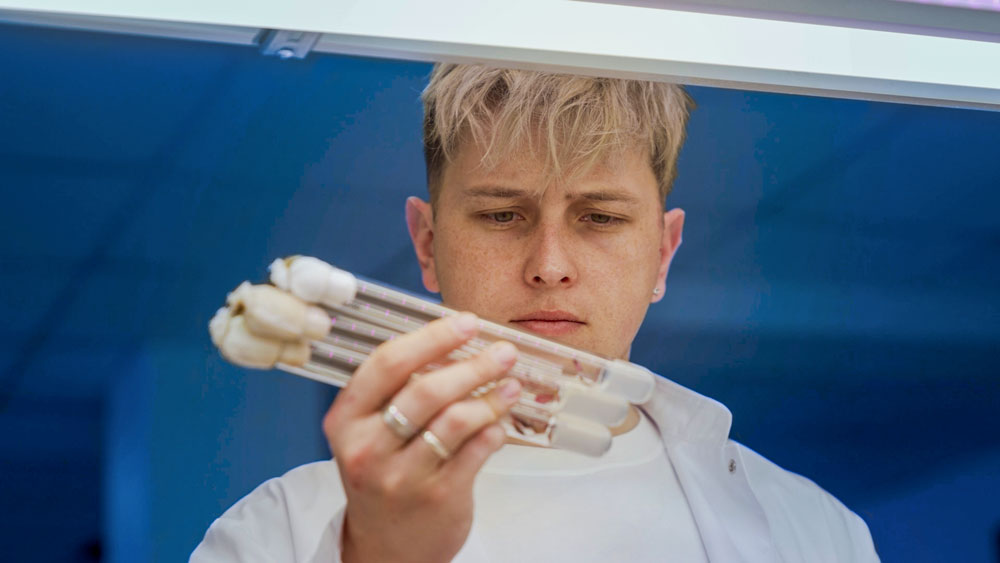
Seeing the impressive results of the biofertilizer and its market demand, I decided to expand production. For this, I needed the support of investors. And I managed to find like-minded people who shared my commitment to a responsible attitude toward Earth. I want to clarify that the uTerra project and the string transportation project have distinct funding sources.
Thanks to our investors, we completed the construction of the uTerra biofertilizer plant in the UAE this year, with a grand opening coming soon. This location was chosen strategically. The cost of energy resources in the Gulf Cooperation Council region is relatively low, enabling us to compete effectively in the market. Since energy constitutes a significant portion of production costs, this advantage is crucial. Additionally, this location allows us to build an efficient supply chain by sea to nearly all countries around the globe.

In the UAE, the product is promoted by a separate entity — Uterra Middle East Agro Industries LLC. Which has its own management and specialized staff.
The plant is already equipped with a bottling and packaging unit for the fertility elixir. Over the past six months, we’ve been ramping up the population of Lumbricus uTerris earthworms, which are essential for producing crumbly biohumus uTerra, a key inoculum for our biofertilizer.
The production and testing facility is fully staffed, with a team of experts in chemistry and microbiology dedicated to overseeing production and quality control of biofertilizers. We anticipate that the facility can produce around 2,000 tons of product annually.
There are more than 8 billion people living on Earth and they consume about 4 billion tons of food every year. This figure indicates the high demand of the population for healthy food. It is possible to obtain them thanks to the organic fertilizer uTerra. I believe that production facilities should be established worldwide.
The production and distribution of uTerra biohumus will significantly reduce the use of chemicals that pollute our soil and water resources, as well as minimize the carbon footprint associated with agricultural practices. This will lead to improved quality and yields of produce, which is particularly vital in regions facing food shortages. Scaling up uTerra’s production will effectively tackle global environmental challenges and facilitate the agricultural transition to more responsible, healthier methods — essentially returning to organic (biosphere) food cultivation as it was millions of years ago, before human intervention. This is a crucial step toward creating a harmonious future for our children and grandchildren.
This form asks for your consent to allow us to use your personal data for the reasons stated below. You should only sign it if you want to give us your consent.
Who are we?
The name of the organisation asking you for consent to use your information is:
Global Transport Investments
Trident Chambers, P.O. Box 146, Road Town
Tortola
British Virgin Islands
We would like to use the following information about you:
Why would we like to use your information?
Global Transport Investments would like to send this information to company registry, inform you about its news, for refund purposes.
What will we do with your information?
We store your name, address, ID Data, date of birth into company registry. We will share your e-mail & phone number with IT Service (https://digitalcontact.com/), SMS Center (http://smsc.ru). They will add your details to their mailing list and, when it is news update, they will send you an email or sms with details. We store your credit card number for possible refunds.
How to withdraw your consent
You can withdraw the consent you are giving on this form at any time. You can do this by writing to us at the above address, emailing us at the address: [email protected] or by clicking on the unsubscribe link at the bottom of emails you receive.
This privacy notice tells you about the information we collect from you when you sign up to receive our regular newsletter via our website. In collecting this information, we are acting as a data controller and, by law, we are required to provide you with information about us, about why and how we use your data, and about the rights you have over your data.
Who are we?
We are Global Transport Investments. Our address is Trident Chambers, P.O. Box 146, Road Town, Tortola, British Virgin Islands. You can contact us by post at the above address, by email at [email protected].
We are not required to have a data protection officer, so any enquiries about our use of your personal data should be addressed to the contact details above.
What personal data do we collect?
When you subscribe to our newsletter, we ask you for your name and your email address.
Why do we collect this information?
We will use your information to send you our newsletter, which contains information about our products.
We ask for your consent to do this, and we will only send you our newsletter for as long as you continue to consent.
What will we do with your information?
Your information is stored in our database and is shared with with IT Service (https://digitalcontact.com/), SMS Center (http://smsc.ru). It is not sent outside of the Euro. We will not use the information to make any automated decisions that might affect you.
How long do we keep your information for?
Your information is kept for as long as you continue to consent to receive our newsletter.
Your rights over your information
By law, you can ask us what information we hold about you, and you can ask us to correct it if it is inaccurate.
You can also ask for it to be erased and you can ask for us to give you a copy of the information.
You can also ask us to stop using your information – the simplest way to do this is to withdraw your consent, which you can do at any time, either by clicking the unsubscribe link at the end of any newsletter, or by emailing, writing us using the contact details above.
Your right to complain
If you have a complaint about our use of your information, you can contact the Information Commissioner’s Office.
Rate and Comment
You can assess the importance of a particular publication and the level of its preparation. Share your opinion in the comments!